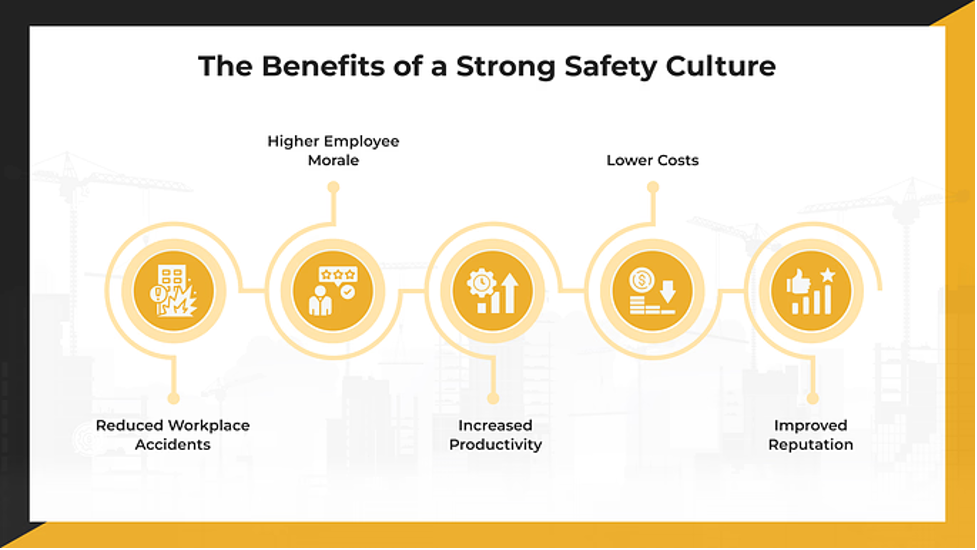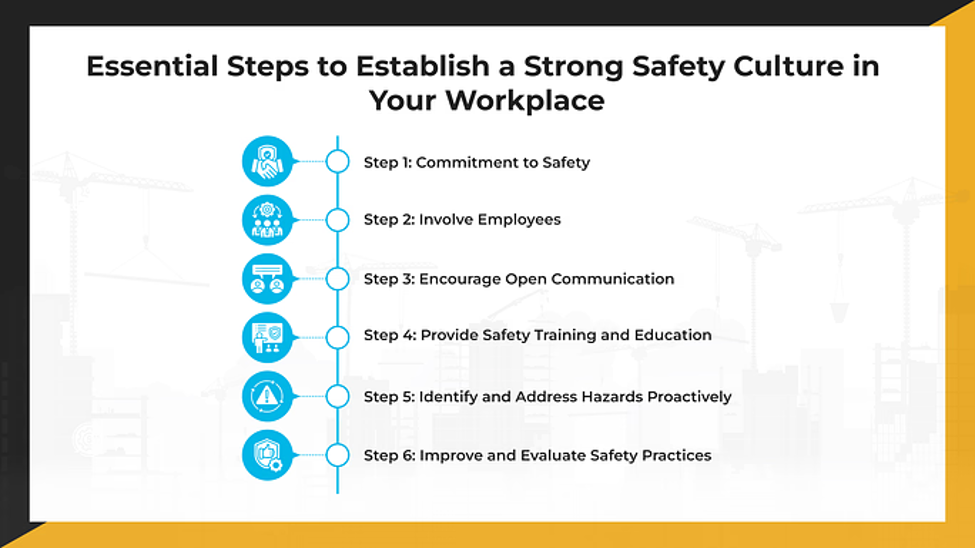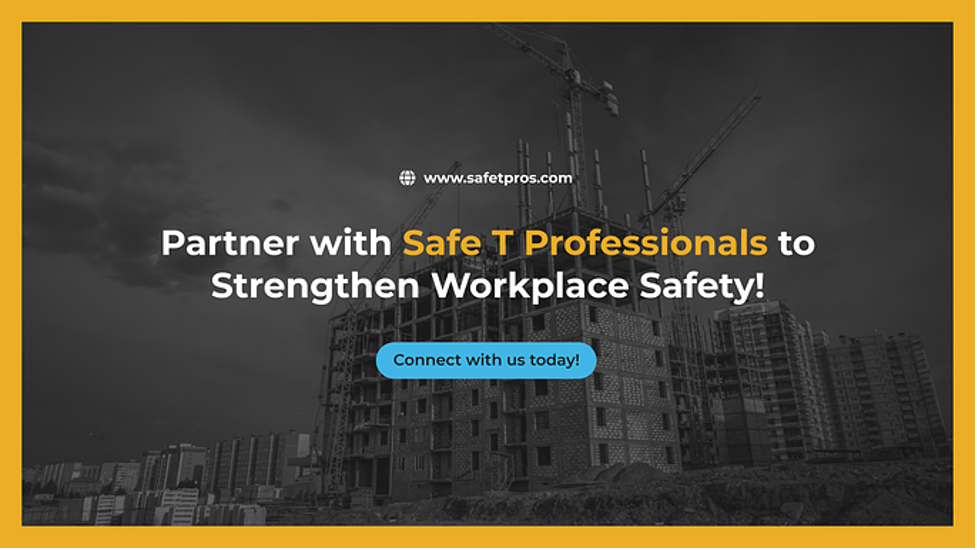In 2010, a significant oil rig explosion in the Gulf of Mexico resulted in 11 fatalities, millions of barrels of oil spilled into the ocean, and billions of dollars in damages. Investigations revealed that poor safety culture—ignored warnings, lack of accountability, and rushed decision-making played a significant role in the disaster.
This tragic incident shows us the critical importance of a strong safety culture.
Safety culture refers to the shared attitudes, values, and behaviors that shape how seriously employees and management take workplace safety. A study found that businesses with a strong safety culture experience up to 50% fewer incidents than those without one.
When workers, supervisors, and management commit to safety, risks decrease, productivity improves, and lives are saved. Companies that invest in safety protect their employees and reduce downtime, lower costs, and build a reputation for reliability.
So, how can you create a workplace where safety is second nature? This blog will explore how you can build a strong safety culture in your workplace, how it impacts workers and businesses, and the key steps to creating an environment where safety is a top priority.
Common Workplace Safety Issues
Workplace safety issues generally fall into three main categories: human factors, health hazards, and environmental factors.
1. Human Factors
These are conditions related to people’s work, environment, and characteristics. They can lead to unsafe behaviors and increase the risk of accidents. Important human factors include:
Job-related tasks – Workload, schedules, and task complexity.
Organizational environment – Workplace culture, leadership, communication, and available resources.
Individual characteristics – Skills, attitude, risk tolerance, and mental health.
2. Health Hazards
Health hazards are physical, chemical, or biological risks that can harm workers. Common hazards include:
Chemical exposure – Dust, gases, vapors, and liquids that can cause burns, respiratory issues, or allergic reactions.
Poor housekeeping – Cluttered workspaces, exposed wires, and broken equipment increase injury risk.
Ergonomic risks – Repetitive movements, heavy lifting, and prolonged standing or sitting.
Industries like construction, manufacturing, healthcare, and mining face higher exposure to these risks.
3. Environmental Factors
Environmental hazards are conditions in the workplace that pose safety risks. These include:
Weather conditions – Extreme heat, cold, rain, or high winds affecting outdoor workers.
Noise levels – Excessive noise causing hearing damage or communication issues.
Lighting and temperature – Poor lighting increases accident risk; extreme temperatures affect worker performance.
Understanding and addressing these risks can help create a safer work environment.
The Essential Elements of a Safety Culture
A safety culture influences how you and your coworkers think about risks, respond to potential dangers, and take responsibility for maintaining a safe work environment. To build a strong safety culture, your workplace needs to focus on four essential areas:
1. Leadership Commitment
Safety starts at the top. If leadership prioritizes safety, employees are more likely to take it seriously. Managers and supervisors should lead by example, wearing protective gear, following protocols, and actively participating in safety initiatives.
Policies, training, and investments in safety equipment should reflect a commitment to keeping everyone safe. Regular safety audits and inspections help identify risks before they turn into problems.
2. Employee Involvement
Safety is a shared responsibility. You and your colleagues should have a say in workplace safety policies and procedures. Employees should be encouraged to report hazards, suggest improvements, and participate in safety committees. Recognizing and rewarding safe behaviors helps reinforce good habits and keeps everyone engaged.
3. Open Communication
A workplace with a strong safety culture makes it easy for employees to report hazards without fear of punishment. Clear communication channels such as suggestion boxes, anonymous reporting systems, or regular safety meetings help ensure safety concerns are heard and addressed. Feedback loops are essential. If you report a safety issue, you should see action taken to fix it.
4. Training and Reporting
Training should be ongoing to keep everyone updated on best practices and new risks. Regular drills, refresher courses, and hands-on training sessions help reinforce safety knowledge. Incident reports and near-miss tracking should be used to identify patterns and prevent future accidents.
Adjustments to policies and procedures should be made based on real data, employee feedback, and industry updates.
The Benefits of a Strong Safety Culture
A strong safety culture has several advantages for both employees and employers. It helps prevent accidents, improves workplace morale, and enhances overall productivity. Here’s how:
Reduced Workplace Accidents
When employees follow safety protocols, the chances of injuries decrease significantly. Fewer accidents mean fewer disruptions, ensuring work continues smoothly without unexpected delays or downtime. A safer environment also reduces workers’ physical and emotional toll, creating a more stable workforce.
Higher Employee Morale
When workers feel that their well-being is necessary, they become more engaged and committed to their jobs. A positive and stress-free environment encourages better teamwork and overall job satisfaction. Employees are likely to stay with a company that protects their health and safety.
Increased Productivity
When accidents are minimized, daily operations are less interrupted. Workers can focus on tasks without worrying about potential hazards, improving efficiency and overall performance. A culture of safety ensures that work gets done without unnecessary delays.
Lower Costs
Workplace injuries come with heavy financial burdens, including medical expenses, compensation claims, and possible legal fees. By preventing accidents, businesses can save money on insurance and avoid the high costs of workplace injuries. A proactive approach to safety helps maintain financial stability.
Improved Reputation
Lastly, a company with a strong safety culture builds a better reputation. Businesses known for prioritizing safety attract skilled employees, reliable clients, and trustworthy partners. A good safety record reflects a responsible and well-managed organization, enhancing industry credibility.
Essential Steps to Establish a Strong Safety Culture in Your Workplace
Here’s how you can create a workplace where safety is a shared responsibility and an everyday priority.
Step 1: Commitment to Safety
As a leader, you set the tone for workplace safety. If safety is important to you, it will be necessary to your employees. You need to integrate safety into your company’s core values and ensure it is reflected in daily operations. This means developing clear safety policies, enforcing them consistently, and ensuring employees have the resources to work safely.
Regular safety audits and inspections help identify potential risks before they become significant. When you prioritize safety and lead by example, your employees will follow your lead.
Step 2: Involve Employees
Every employee should take ownership of safety. Workers who feel involved in safety efforts are more likely to follow protocols and look out for one another. Encourage employees to speak up about safety concerns, suggest improvements, and actively participate in safety initiatives.
Recognizing and rewarding safe behaviors can reinforce good practices. You can also form safety committees or appoint safety ambassadors to ensure someone always advocates for safety within the team. Safety becomes a natural part of the workplace culture when everyone takes responsibility.
Step 3: Encourage Open Communication
Employees should feel comfortable reporting safety concerns without fear of punishment. If people are afraid to speak up, hazards can go unnoticed until it’s too late. To prevent this, a clear and accessible reporting system should be set up so employees can report issues confidentially.
Regular safety meetings and toolbox talks also help keep safety at the forefront of people’s minds. The key is creating an environment where employees trust their concerns will be heard and addressed. When safety feedback leads to fundamental changes, employees will be more likely to stay engaged.
Step 4: Provide Safety Training and Education
Training sessions ensure employees stay updated on best practices, new regulations, and emerging risks. Real-world scenarios, drills, and hands-on activities make training sessions engaging. Employees should know how to handle emergencies, use safety equipment correctly, and recognize potential hazards. Updating training based on incident reports and industry trends ensures that safety education remains relevant and practical.
Step 5: Identify and Address Hazards Proactively
The best way to prevent accidents is to stop them before they happen. Encourage employees to recognize and report hazards as soon as they see them. Implementing a near-miss reporting system can help identify risks that might otherwise go unnoticed.
Using data to track safety incidents can also help you spot patterns and predict where the next accident might occur. The more proactive you are in addressing potential hazards, the safer your workplace will be.
Step 6: Improve and Evaluate Safety Practices
Workplace safety is an ongoing process that requires regular assessment and improvement. Conducting routine safety audits and risk assessments helps you identify weak spots in your safety procedures.
Key performance indicators (KPIs) measure safety performance and track progress over time. Are incidents decreasing? Are employees following safety procedures? Based on the findings, update your safety policies to reflect new challenges and industry advancements.
The Role of Workplace Training in Creating a Strong Safety Culture
A strong safety culture starts with well-trained employees who understand how to recognize hazards, follow safety protocols, and respond effectively in emergencies. While hazard control measures are essential, they are only effective when workers have the proper knowledge and skills to implement them. Workplace safety training is necessary to promote safe behaviors, prevent accidents, and ensure compliance with industry standards.
At Safe T Professionals, collaborating with Gallagher Bassett, we are committed to strengthening workplace safety through expert training and staffing solutions. Our onsite, in-person, and hybrid training programs, led by certified professionals, provide hands-on learning experiences that help employees integrate safety into their daily routines.
Partner with Safe T Professionals to Strengthen Workplace Safety!
At Safe T Professionals, we are dedicated to elevating safety standards through our expert consulting and staffing services. By proactively addressing and preventing safety issues and equipping your workforce with the necessary knowledge and tools, we help create a safer work environment.
Partner with Safe T Professionals to enhance your company’s safety protocols and ensure compliance with industry standards. Whether you are looking to fill safety-specific roles or need expert consultation to mitigate workplace hazards, we are here to help.
Connect with us today!




